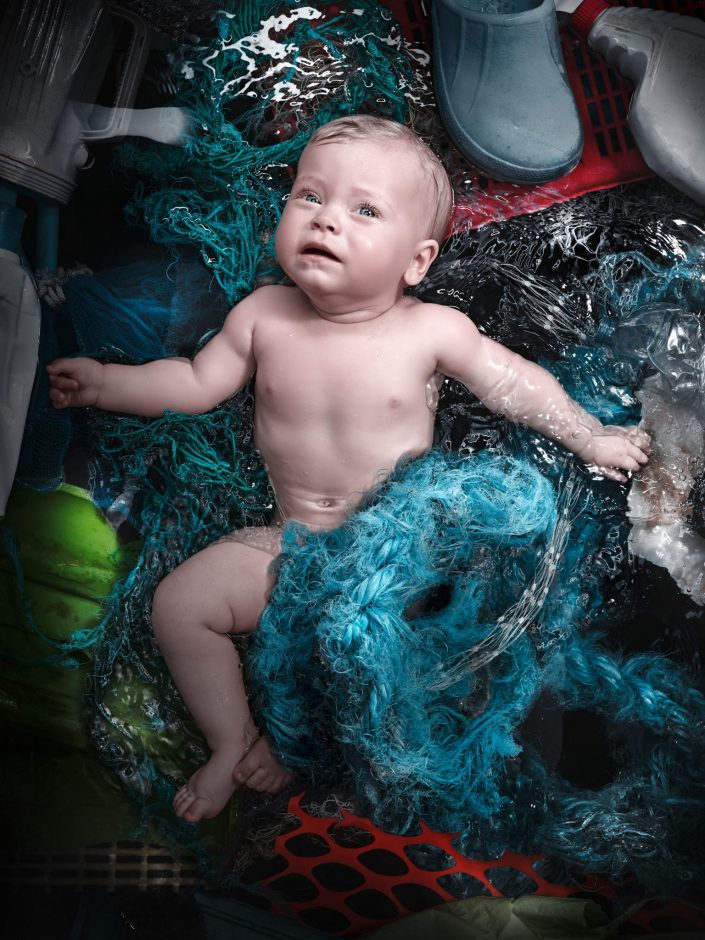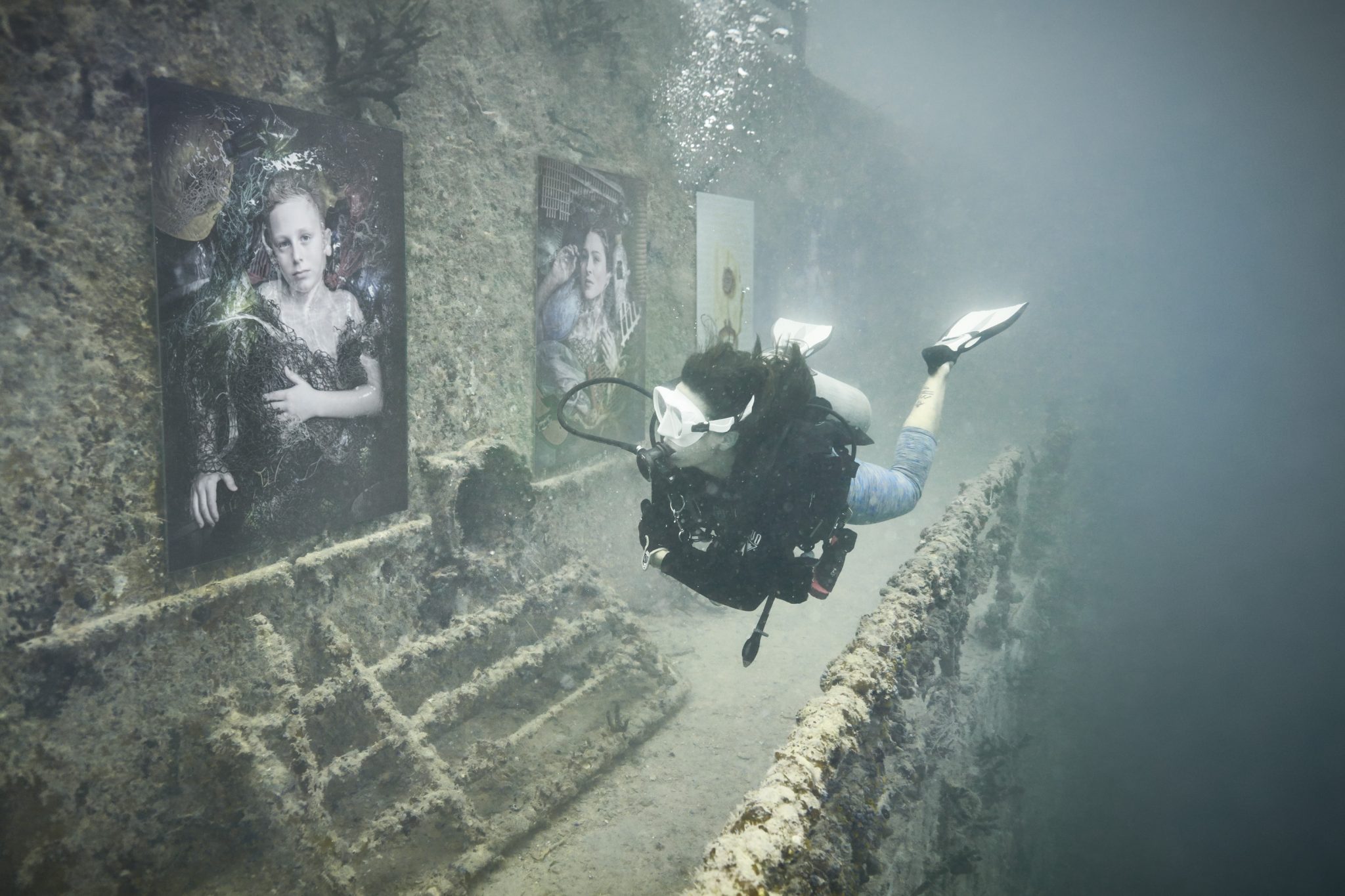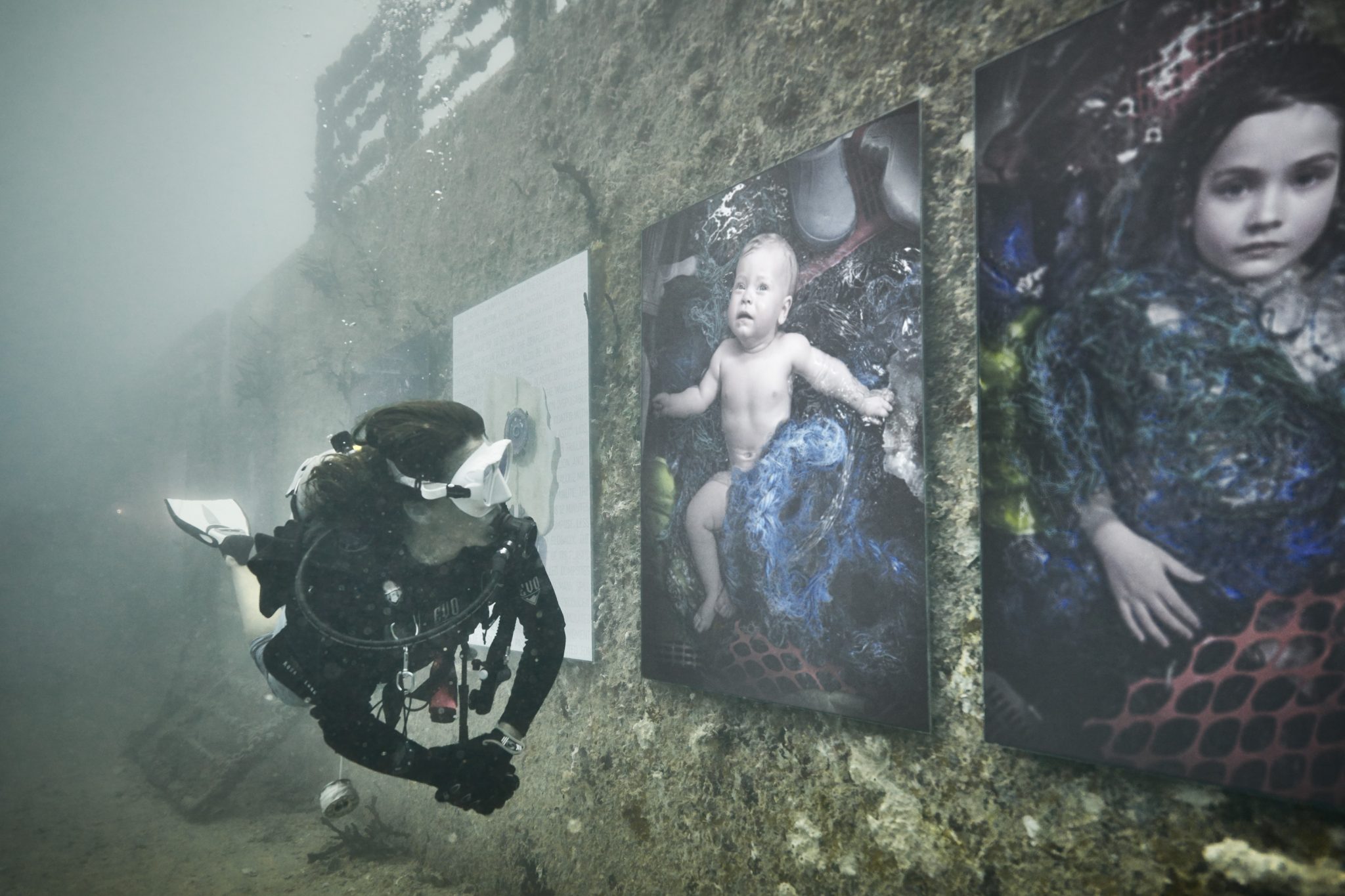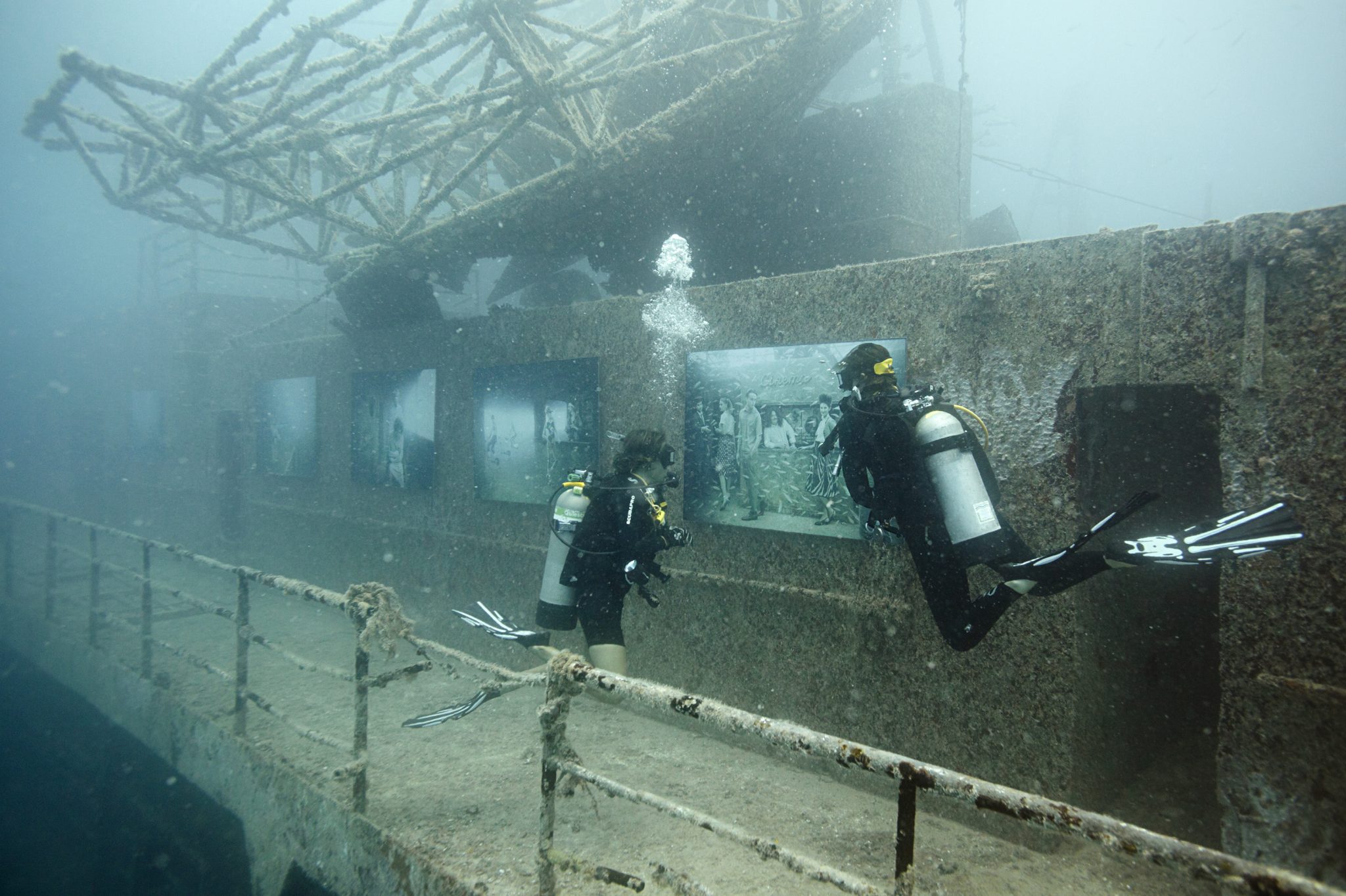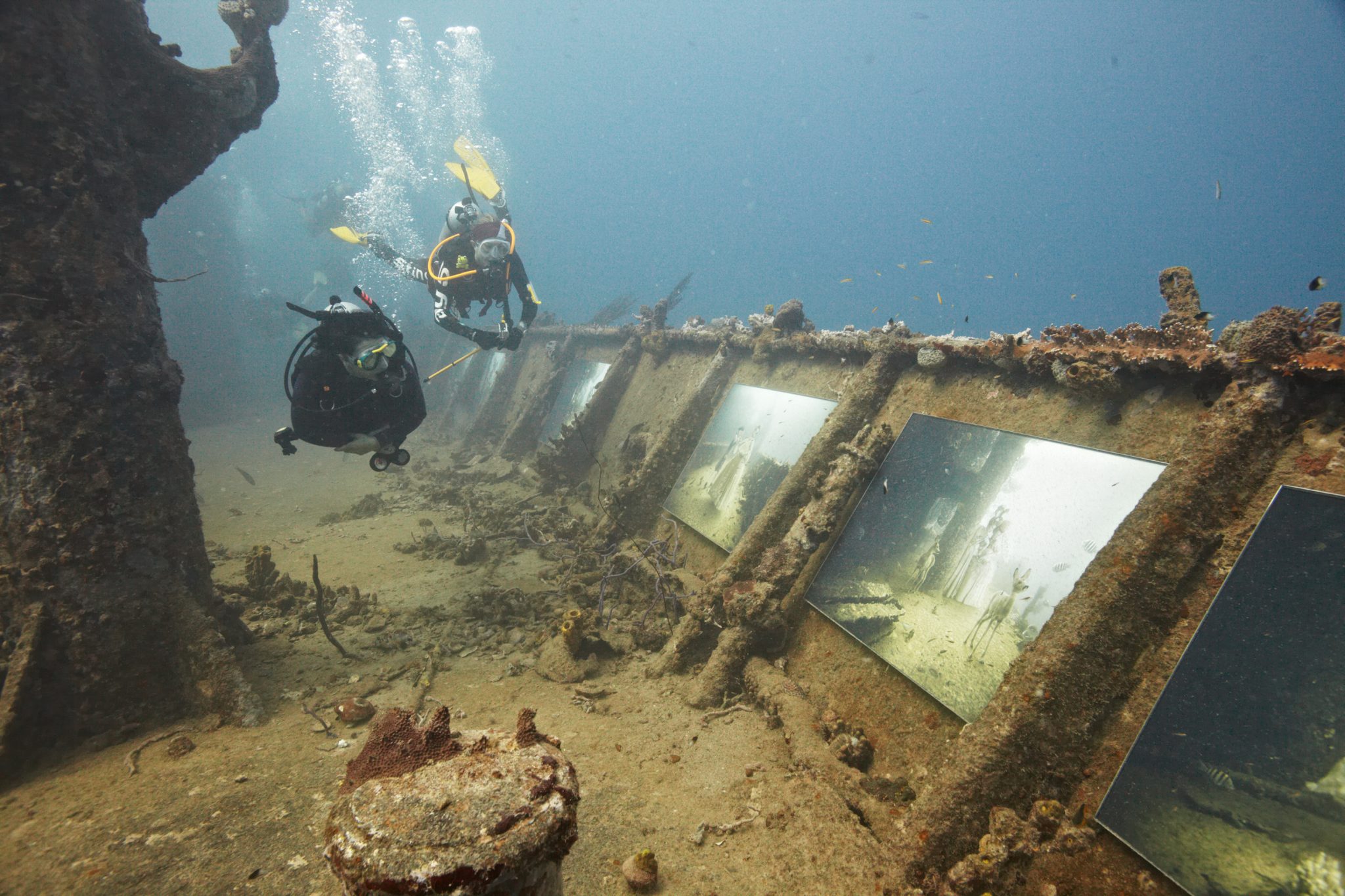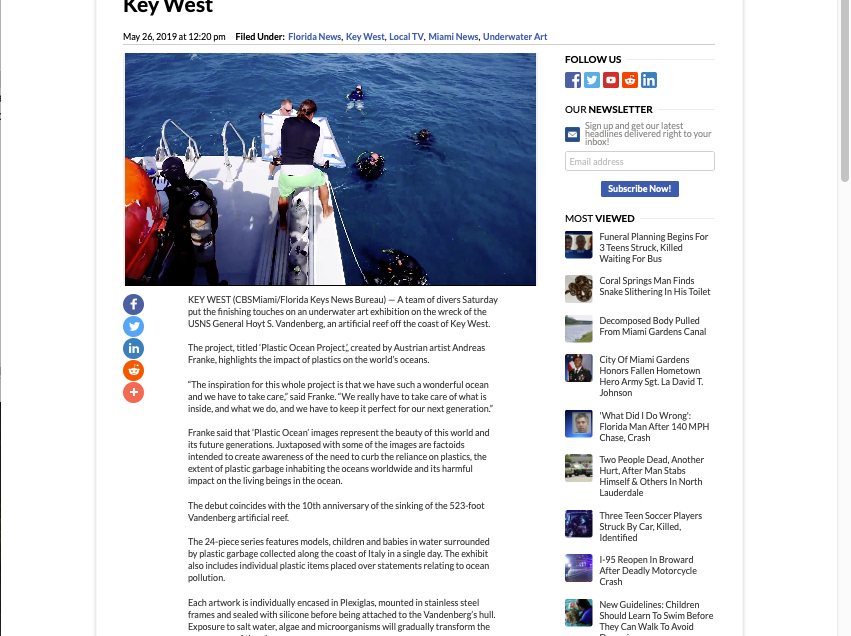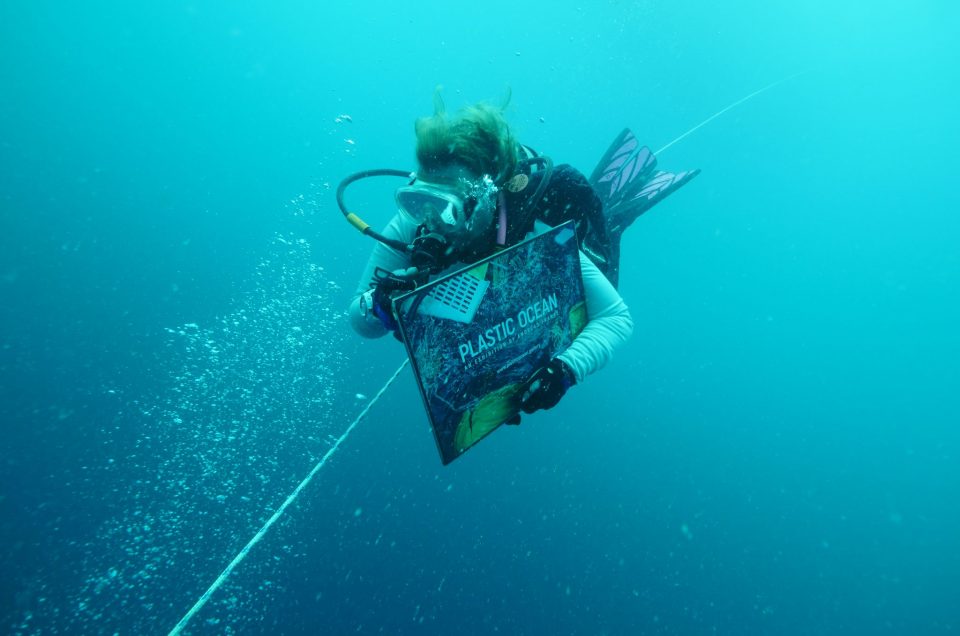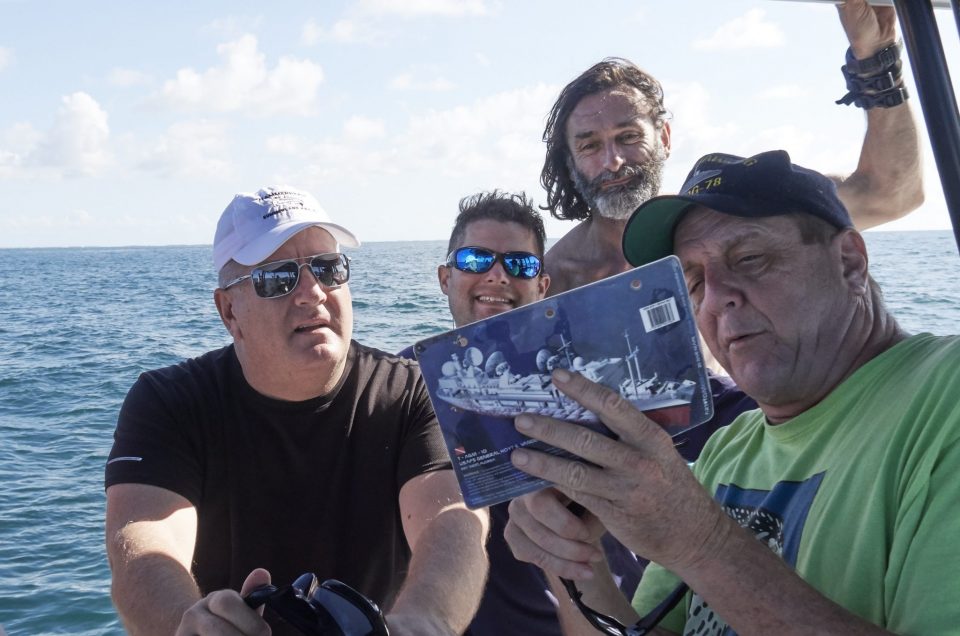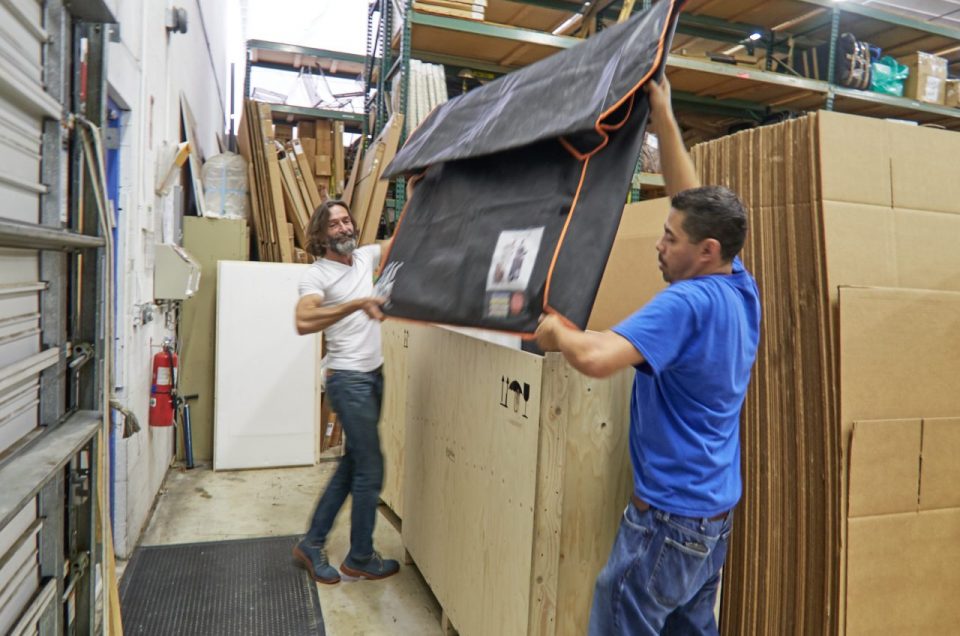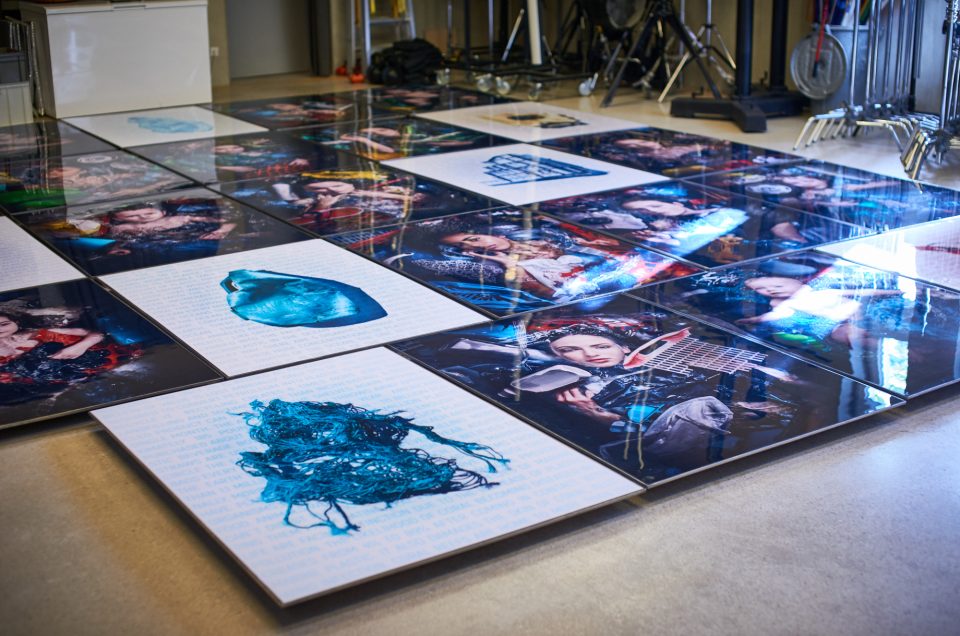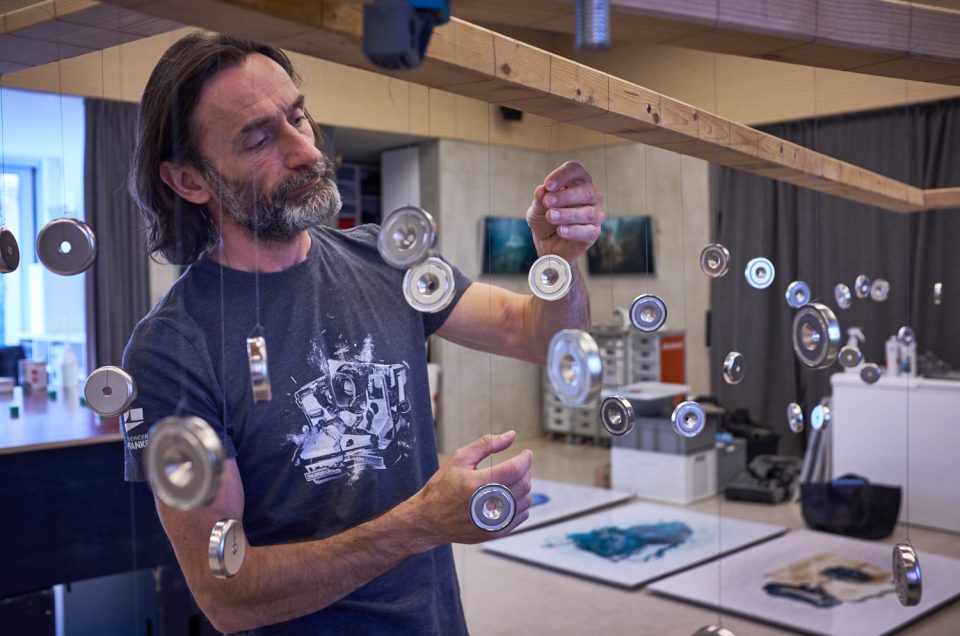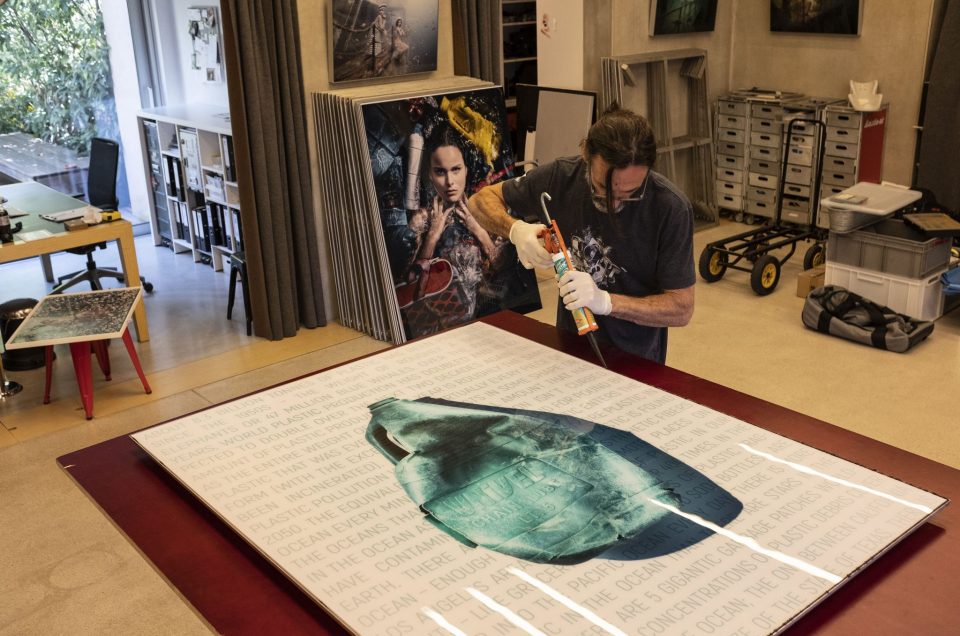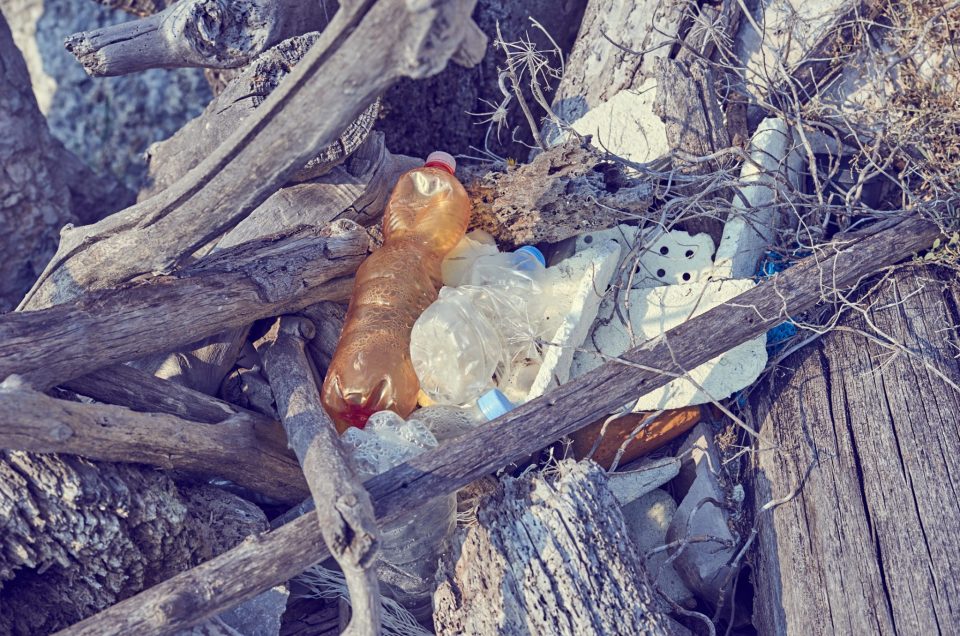-
Recent Updates
- Plastic Ocean @ Haus des Meeres Vienna September 24, 2024
- Finally the artwork rises again October 30, 2019
- Impressions from the Vandenberg underwater gallery May 29, 2019
PLASTIC OCEAN
The equivalent of a truckload of plastic enters the ocean every minute.
Between 1950 and 2015, 8.3 BILLION TONNES OF PLASTIC were produced worldwide. That corresponds to more than one ton per person living on earth today. Every year about ten million tons of plastic waste end up in the world’s oceans, more than 500,000 tons from Europe alone.
Dramatic images of sea turtles strangled by plastic strings or sharks’ stomachs filled with plastic bags are currently hanging on billboards.
We’re destroying our oceans and the creatures that live in them. And I am convinced that everyone must do their part to save them. If we don’t, we not only destroy them, but also ourselves in the end.
Photography. Diving. Passion.
I’m a photographer. Father. Passionate diver. I travel the world and have always enjoyed the unmistakable beauty of nature. I’ve taken tons of pictures of this beauty. This is what I do best. Catching moments, impressions, feelings with my camera. Creating photographs is my way of dealing with a subject. And it is how I can bring attention to the problem of plastics in our oceans.
With my art, I don’t want to shock anyone, but rather to draw attention to a subject to make people think. I believe that humanity has learned to repress shocking images. The more frightening the pictures, the more ineffective they become in the end. Shocking images of sea creatures are not processed any further by many people. They have no relationship to the ocean, and therefore have no relationship to its living beings, and so they do nothing.
From this, I developed my idea for the Plastic Ocean Project.
Representing everything that is beautiful in this world, I show beautiful people. Representing our future, I show our next generation. I show both groups in the water among plastic garbage, which was collected along the coast of Italy in a single day. Through the next set of images I isolate individual plastic items from the first series and juxtapose them with facts to create more awareness about the extent of the plastic problem in our oceans.
In order to give the whole project even more impact, I will be showing the artworks where our plastic problem is most acute: in the sea. More precisely, as an underwater exhibition on the wreck of the USS Vandenberg off the coast of Key West, FL, from May 24 through August 2019, where they can be viewed by anyone willing to dive to its depths. Once the images are removed from the ocean and dried, they will be exhibited on land, with the unique patina developed during their months under the sea, to give non-divers a glimpse of the beauty of the ocean and the creatures that live within it in the hopes that they will be inspired to help.
Be part of the solution
Everyone says, “I can’t solve such a big problem alone,” but I’m convinced that we can.
Each of us can contribute in our own way. Just like companies and governments.
Is all of this plastic really needed? What could be the alternatives? We have to stop using our oceans as rubbish dumps, and we all need to work together to preserve the beauty of Planet Earth for our common good and try to make our lives plastic free!
Andreas Franke
the PLASTIC OCEAN project
If you are interested in exhibitions or buying Originals, please contact us.
underwater gallery
An underwater gallery not only holds divers spellbound. The ocean leaves peculiar and impressive traces on the pictures. The weeks and months under water bequeath Andreas Franke’s works with a special, unique patina which beautifies them and leaves a strange touch of impermanence. The sea dresses the pictures in strange suits. Salt, algae and microorganisms from below gather to adorn the pictures from the world above with the signature of the ocean. Eventually the mysterious and oddly ennobled beauties surface to be seen on land.
The Plastic Ocean exhibition will be shown underwater from May 25th to August 25th aboard the wreck of the the USS General Hoyt S. Vandenberg off the coast of Key West, Florida (24.27 N, 81.44 W)
the artist
Based in Vienna, Austria, Andreas Franke has been named one of the 200 Best Ad Photographers Worldwide. Known for pushing the boundaries of commercial photography, diving is his true passion.
In 2010, Franke merged his talent with that passion to create The Sinking World project, through which he captures the poignant beauty of ships sunk to create artificial reefs. He begins by photographing these giants, such as the former USS General Hoyt S. Vandenberg near Key West, Florida, at the bottom of the sea. Next he composites them with scenes shot in his studio to create alternative realities that capture the spirit of the ships.
Large-scale prints of these images are then put back where they were born—at the bottom of the ocean. Displayed on the original wrecks, underwater galleries are made available to anyone who can descend to depths of 25 to 30 meters and are also visited by fish and other fauna. Over time, the artworks gain a unique ocean patina that seals Franke’s vision.
The project has been a runaway success. In addition to the thousands of divers who visited the underwater exhibitions, it has been covered by major media outlets including CNN, ABC and the Wall Street Journal.
Since 2011, Franke has carried out three Sinking World projects: on the wrecks of the Vandenberg, the Stavronikita and the Mohawk. The projects were supported by exhibitions in the United States and Europe, both underwater and on land.
Franke’s newest projects build upon the interest in the ocean generated by The Sinking World to draw attention to the issues he cares about, such as the need to rid the oceans of plastic, through the Plastic Ocean Project and the need to rid the world of nuclear weapons through the upcoming Nuclear Fleet .


© Robert Wilpernig
news & updates
contact & newsletter
If you are interested in exhibitions or buying Originals, please contact us.
For updates on this project, invitations to future exhibitions or regular news
on Andreas Frankes projects, leave us your mailadress for our newsletter.
contact
The Sinking World c/o Staudinger+Franke GmbH
Josef-Endlweber-Gasse 2a 1230 Vienna Austria
+43 1 597 01 24 info@thesinkingworld.com
Or use the following contact form to write us an Email.



























